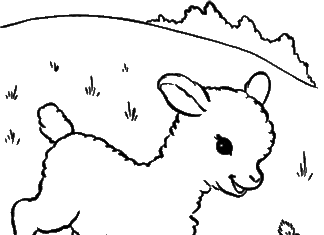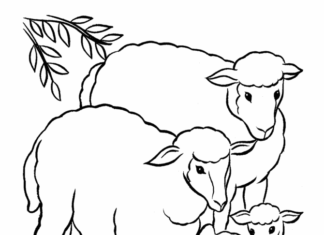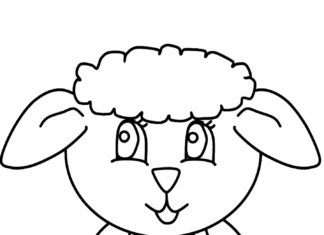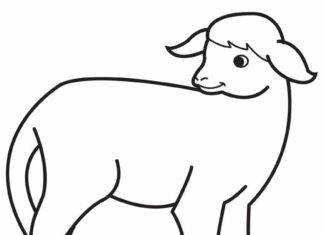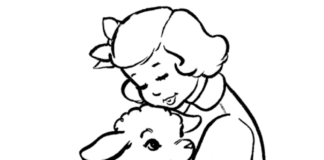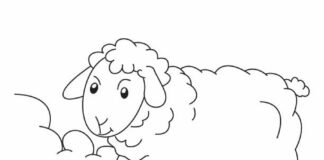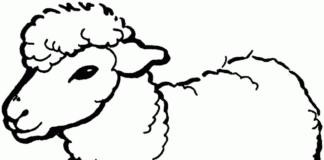Lambs are the young of a sheep, usually between birth and about a year old. Lambs are distinctive because of their shorter coat and delicate appearance compared to adult sheep. They are fed their mother's milk in the first days of life and gradually introduced to solid feed. Sheep mothers are often protective of their lambs, taking care of their health and development. Lambs are of great importance in economic breeding and culture symbolically representing innocence and the beginnings of life.
Lamb coloring pages
information
- Age: Lambs are sheep from birth to about a year old. After that age, they are called lambs.
- Physical characteristics: Lambs usually have a shorter coat and a softer appearance than adult sheep. Their coat can be softer and fluffier.
- Caring for lambs: Mothers of sheep (lambs) usually take care of their lambs, feeding them milk and providing them with warmth and protection.
- Feeding: In the first days of life, lambs usually drink their mother's milk, which provides them with the nutrients they need. Later, solid feed is gradually introduced.
- Visiting the pasture: Lambs are often seen in pastures, where they run and play with their peers under the watchful eye of caring mothers.
- Usability: In the past, sheep and their lambs were raised primarily for their wool, meat and milk. In modern times, sheep farming also has ecological and landscape significance.
- Breed breeding: There are many breeds of sheep, including breeds that specialize in meat, wool or milk. Breed breeding aims to produce lambs with specific characteristics and genetic traits.
- Cultural symbolism: In various cultures, lambs can have symbolic meanings, representing, for example, innocence, sacrifice or the beginnings of life.
- Health and care: Lambs require special care and attention to their health. A healthy diet, hygiene and proper living conditions are important for their proper growth and development.
- Seasonality: In many regions, the birth of lambs is seasonal, usually in spring or early summer, when weather conditions are more favorable for their growth.
trivia
- Copulation in winter: Many sheep species are seasonally reproductive, meaning that they copulate during a specific season. For some breeds of sheep, this season falls in winter, meaning that lambs are born in spring or early summer.
- Maternal behavior: Sheep mothers are usually very protective of their lambs. They bond quickly with them and often defend their offspring from threats.
- Length of pregnancy: Pregnancy in sheep usually lasts about five months, although this time may vary depending on the breed and environmental conditions.
- The birth of twins: In some breeds of sheep, the birth of twins is quite common. This may be due to the inheritance of a genetic trait or the use of appropriate breeding practices.
- Increase in speed: Lambs grow quite quickly. Within the first few days of life, they are able to walk and drink their mother's milk. As time passes, they gain strength and size.
- Variable coat color: Many lambs initially have a different coat color than their parents, and this can change with age. For example, in some breeds of sheep, lambs born white may gradually change to a creamier or browner color.
- Hoof cleaning: Lambs a few days old can have their hooves cleaned, which is important for their health and prevention of hoof problems.
- Similarity to parents: Despite differences in coat color, lambs often inherit certain characteristics of their parents, such as body shape, horn structure (if present) and performance.
- More resistant to disease: Lambs tend to be more resistant to certain diseases than older sheep because their mother's milk provides them with antibodies that help strengthen their immune systems.
- Lambs in literature and culture: In many cultures around the world, lambs have symbolic meanings. In literature and mythology, they are sometimes referred to innocence, sacrifice and beginnings, and are important elements in stories.

